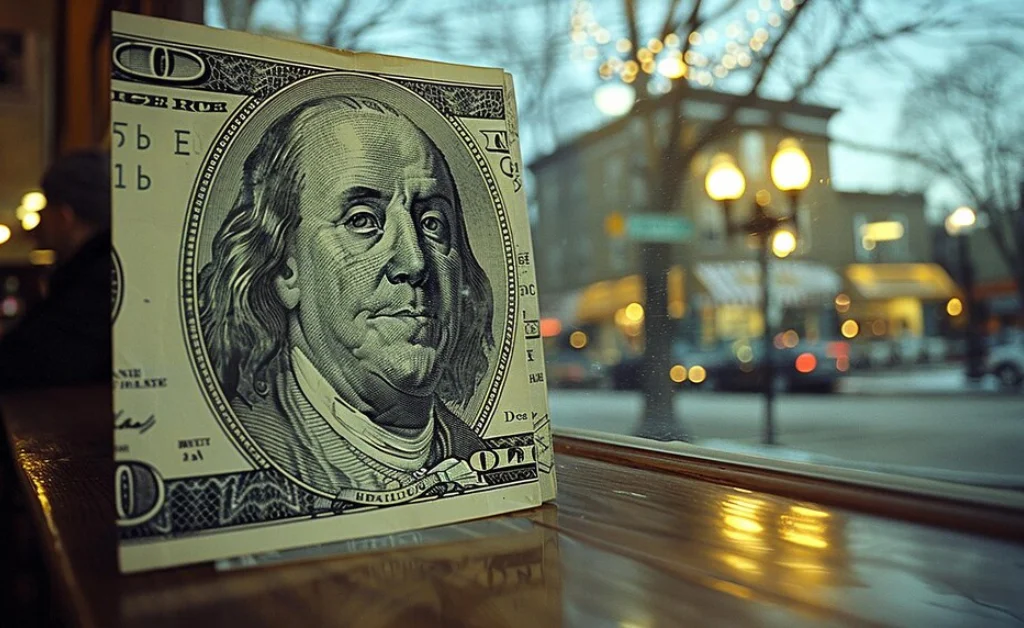$5 New York State National Bank of Albany: A Rare Financial Treasure
The $5 New York State National Bank of Albany note is one of the treasures of American history and the banking system of the Empire State. Printed and in circulation during the nineteenth century this piece of currency is an epitome of artistic work, Innovation, and trade达. And with its complex patterns and connection to Albany’s banking past, it remains one of the region’s biggest treasures for enthusiasts of both antiques and history. These are banknotes printed under the National Banking Act and are a good way to understand how early banking systems developed the modern banking networks. For more information about the history and designs of American paper currency you can follow the link to the National Numismatic Collection.
Packaging Albany as the Hub of New York State’s Financial Center
Albany which is the state capital has always been a major player in the provision of commerce and banking. The position on the Hudson River made it a convenient site for business in the nineteenth century was ec nănggical point as well. New mercantile and industrial banks such as the New York State National Bank of Albany came into existence to support commerce, industry, and, in particularly, provide finances for business and ensure sound money.
The $5 note as national currency under National Banking Act of 1863 helped to retrieved a fragmented banking structure in America. Many banking institutions in Albany: New York State National Bank for instance was a symbol of this progress by integrating local economies with a nationwide financial system. These notes were not simply means of payment but signs of confidence and of trust, of economic reliability emblematised by New York as an essential facet of the New York money structure.
The design of the $5 note consists of the following;
The Series 1875 $5 New York State National Bank of Albany is a rare piece of historical documented money. The dollars whose designs are featured here were printed by the American Bank Note Company and later by the Bureau of Engraving and Printing and while the art is beautiful, it is mind boggling to know that often the art and the patterns of the designs served as a way of preying of the counterfeits.
This side of the note mostly contained a portrait of an influential political figure such as Abraham Lincoln to represent democracy that governs the US. The reverse depicted detailed geometric and stylized patterns and the national mottos and seals that pointed to the note’s federal issuance by the Office of the Comptroller of the Currency. These features made the notes nice to the eye, but they also made them rather hard to forge.
The denomination most important to Albany – and to America – was $5; this circulated as the nation’s currency of common exchange.
Also Read: https://creatify.click/a-big-candy-casino
Contributions of Albany’s Banking Institutions to the Economy
The $5 New York State National Bank of Albany was found to be an important institution in Promoting economic growth in the Capital Region. It being a source of merchant and manufacturer credit, it helped spur trade and invention to make Albany one of the regions most financially influential cities. The bank was also involved in other multis쳐 of organization like the Albany Clearging House Association which enhanced banking processes and guarantee clearing of cheques and other instruments.
Albany’s banks were very much branch of the New York Clearing House that was associated with banking of the commercial center in Manhattan. This improved the state’s economy & made it clear that there are benefits in having a centralised union of banks.
The Change from the State Charter to Federal Benjamin B. White
Prior to the creation of the Federal Reserve System people were able to own banks that had either state or federally charter. The National Banking Act introduced various changes on the monetary assets: such as the $5 New York State National Bank of Albany note. But in their absence problems were frequent, such as financial crashes and panics that took place in the United States in the late 1800s.
The formation of Federal Reserve also became one of the most revolutionary moments in the American finance and put an end of the national banknote system, issued by individuals. To collectors and historians, these notes are cherished mere physical resources representing a period of the nation’s financial transformation.
About the Numismatic Value and Importance
Of course, the $5 New York State National Bank of Albany note is highly appealing to numismatists and collectors because of how rare the note is and the history associated with this specific note, along with the design of the note. $5 New York State National Bank of Albany is now largely outdated concerning a particular model of individualized relations between bank and a client which was characteristic for the nineteenth century. Many of these notes still exist in very good form they attract high bid prices to collectors because of their historical significance.
People provide their signatures on the document, and authentication is necessary for verifying a note’s authenticity. $5 New York State National Bank of Albany includes details of engraving, serial numbers, and signatures and engravings that specialists investigate to determine the genuine product. Low number serial number notes or notes that have not been printed that often are especially valued.
Historic paper money’s preservation
That is why it is vital for antique currency like the $5 New York State National Bank of Albany note to be preserved to the best of everyone’s ability. Flipping the picture face down in acid-free containers, in dark and cool environment can slow the course of degradation. Both collectors and institutions spend a good deal of money in fine art restoration aiming at passing on these pieces in one piece to the next generations.
Measures of even an organization like the Smithsonian Institution make it clear that more needs be done to protect America’s monetary history, or artifacts as they are, from further deterioration.
Also Read: https://lyrifii.com/music-is-the-devils-tool/
Banking Heritage of Albany
Much to this date, this historical landmark is deemed important in the financial and economic growth of the city as a whole though the New York State National Bank of Albany does not exist today. The notes, especially the $5 New York State National Bank of Albany note, are still considered valuable keep sakes of Albany and the part that it played in development of the New York State financial system.
These notes link us to a time where banking was not only about the efficiency of an investments, but also the immediacy of the neighborhood. It is these monuments, therefore, that testify to Albany’s place in the continental process of refining the mechanisms of fiscal evolution.
FAQs
1. The $5 New York State National Bank of Albany note is important because it reflects the history of United States of America.
This is an important point when the development of American banking system is vital for understanding the role of national currency for stabilizing the economy. Due to its relation to the financial development of Albany and because of its superior craftsmanship, the banknote represents a desirable collectible piece.
2. Let me know how an authentic $5 New York State National Bank of Albany note looks like?
Authentication can be carried out in terms of paper quality, serial numbers and engraving discrepancies. To determine the note’s authenticity get the help from a professional numismatist or use particular instruments and equipment.
3. Are $5 New York State National Bank of Albany still valid?
No they are not legal tender as far as I know. However, they have a lot of of value for collectors due to historical and numismatic worth.
4. Where can I obtain real fake $5 New York State National Bank of Albany note?
These notes are available at numismatic sales, directly from dealers or from the Internet sources. Fakes are common; therefore, make sure you buy the products from accredited stores.
5. This website will help me answer questions such as; How do I take care of the old paper money?
It is also recommended to preserve and organize the notes in compensated, high-density documents and place NYCMA numbered holders and the records in a cool, dry area and off of any light. This means proper handling is required to avoid damage of the components to the product.



